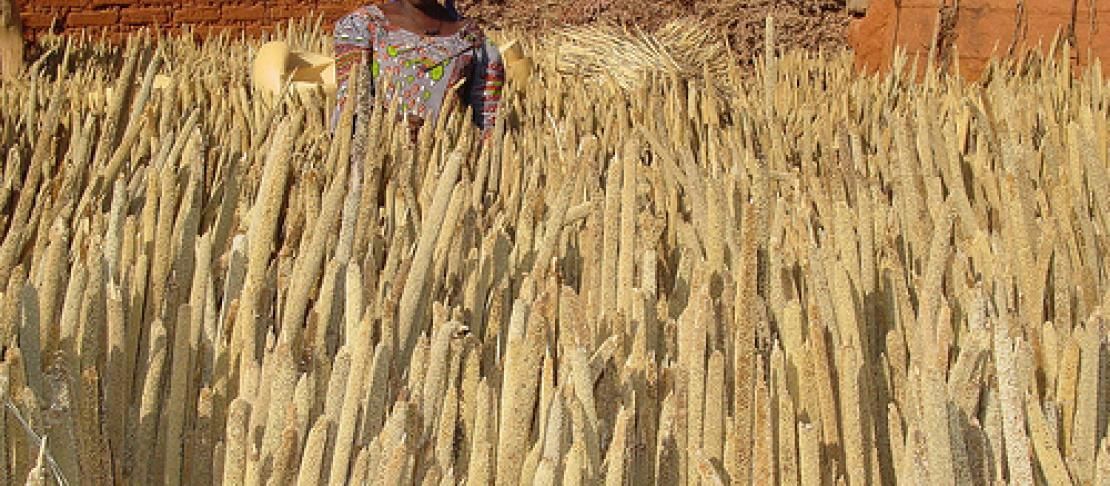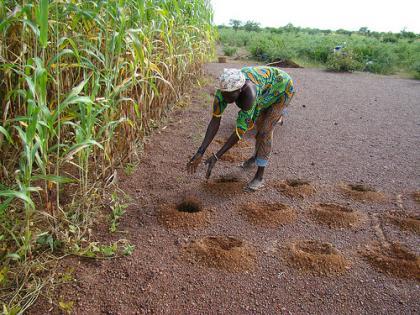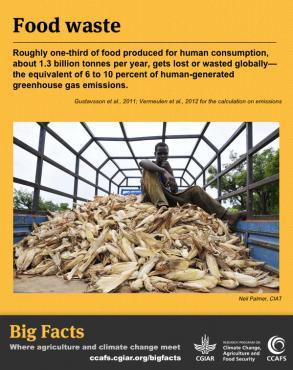What's so smart about climate smart agriculture?

by Cecilia Schubert
In a world where some countries will experience temperature peaks over 45-50°C, finding crops and vegetation that can deal with such heat stress will be a struggle. There may in fact be a limit to how much we’ll be able to adapt. But there are things we can do that make us armed enough to tackle the climate challenge. One of these things is looking at what climate smart agriculture can offer smallholder farmers.
If you have followed our blog, I am sure you have heard the term “climate smart agriculture” before. But what are these “climate smart practices”? What do they look like on the farm, and are they really working?
Perhaps it is time to get our minds off the theory and instead get into what is really happening on the ground. We've compiled 14 inspiring examples of large scale successes in climate smart agriculture, from all over the world. And at the recent UN Climate talks in Doha, we heard about a few more.
The presenters at the "Role of the UN in achieving climate smart agriculture" COP18 side event last week gave a rundown of some of the farming practices that can help create farmer resilience while improving food security and in some cases deliver mitigation co-benefits.
Water Management: little things can make a big difference
“Zai” is a traditional African planting technique that uses water and nutrients better, according to Alexandre Meybeck from the Food and Agriculture Organization (FAO). Semi-deep pits are dug in the field, normally before the rainy season with compost, or manure, covering the zai, to improve fertility. Seeds are then placed in the pits. The hole helps ensure that water does not run-off and nutrients stay put. The practice can help revitalize the soil in dry areas and has proven to improve yields.
In Burkina Faso, the CCAFS West Africa regional team is engaging with farmers and farmers’ organisations to help them change practices towards techniques such as zai, that help farmers deal with the staggeringly hot and dry farming conditions. See photos from this work: Burkina Faso farmers show off their zai knowledge.
Food Waste: A lot gets spilled along the way
 Roughly one-third of food produced for human consumption, about 1.3 billion tonnes per year, gets lost or wasted globally. One thing that is becoming increasingly clear is that high amounts of post-harvest foodis lost due to spoilage, especially in developing countries. Reasons behind the loss include lack of modern transport and storage infrastructure.
Roughly one-third of food produced for human consumption, about 1.3 billion tonnes per year, gets lost or wasted globally. One thing that is becoming increasingly clear is that high amounts of post-harvest foodis lost due to spoilage, especially in developing countries. Reasons behind the loss include lack of modern transport and storage infrastructure.
One way to overcome storage issues has been through introducing metallic silos, or containers. Promoted by FAO and others, the simple idea has come with great benefits, Meybeck explained. Through silos, farmers have helped reduce greenhouse-gas emissions, as less food needs to be produced, improved food security and resilience in the local communities. One other really important side effect has been the creation of local jobs, in countries who now produce their own silos, and thus boosting the economy.
Restoring degraded lands: Letting the farmers take the lead
Land restoration is another important issue when thinking climate smart. With the help of local, national and international efforts, Niger managed to scale up local woodland-management practices. By 2008, an estimated five million hectares of land had been transformed with the help of farmes and community members, with approximately 200 million new trees.
The management has benefitted around 2,5 million people, especially women who now don’t have to walk as far to find firewoods. The project has helped restore soil fertility, mitigated climate change, ensured food and fodder for livestock and more. Read more about what was key in making this project a success in Niger.
As seen in the post, climate smart agriculture is thus not one really clever practice. Rather it is about simple but transformative approaches that put resilience and adaptation upfont, while also valuing mitigation. That is what makes it "smart" - it is not about one way, but many ways to achieve a better future.
Talking climate smart action with farmers means offering them a portfolio of available actions, delivering need-based information and helping to ensure that enabling policies and institutions are there to support farmers.
Cecilia Schubert is a communications assistant at the CGIAR Research Program on Climate Change, Agriculture and Food Security (CCAFS). Follow the latest developments from the UN climate talks in Doha on our blog, on twitter @cgiarclimate and #ALLForest.